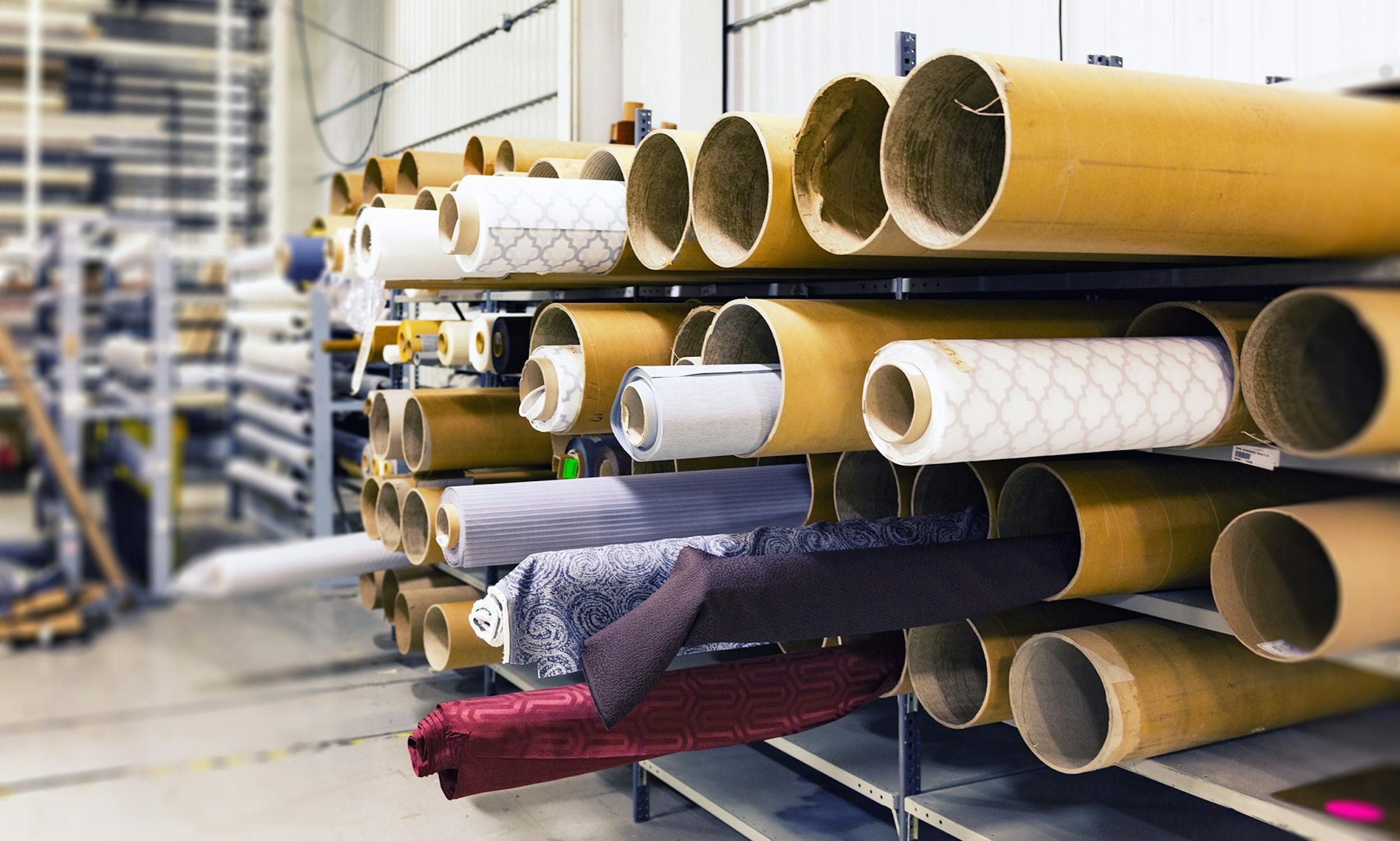How has our consumer behavior fueled the throwaway culture of fast fashion?
In many ways, aspects, and areas, we have created a throw-away society fueled and influenced by consumerism. This culture of overconsumption encourages us to view and treat items – as well as the finite resources required to make them – as disposable rather than long-lasting and sustainable. From an industry perspective, products are designed with a “take, make, waste” approach, meaning that in this linear economy model, consumer products are not designed to last or to be reused and regenerated once they’ve reached their End-of-Life. This model can be seen in a majority of areas and businesses in our current society, and one of these is the fashion industry, particularly fast fashion.
Fast fashion’s throwaway culture encourages consumers to view clothing as disposable and easily replaceable so that brands can continue to push out new items week after week without regard for what happens to the garments once they are sold.
According to the Fashion Retail Academy’s 2018 survey of 2000 respondents aged 18-35, 83% of consumers have bought items they never wear, 22.5% have in their wardrobes over 10 items they have never worn, and 12% of consumers throw away their clothes rather than recycle them. The same survey reports that 61% of buyers have no interest in quality long-lasting clothing, and over 25% prefer cheaper clothes that only last one season.

In another research by UK-based recycling and waste management company First Mile, “over 1 in 6 adults throw their unwanted clothes in the bin rather than seek more sustainable disposal alternatives, and nearly a third of people (31%) say that they would be more likely to replace a damaged item of clothing with a new one rather than try and fix it.”
These studies show that it is fairly common for consumers to purchase items they don’t wear often or at all, and that they would rather trash their unwanted clothes and buy new ones instead of attempting to repair, sell, or donate them. This is no surprise as fast fashion makes shopping for new clothes easy, accessible, and affordable; the level of convenience and affordability are some of the main reasons fast fashion is so appealing to the masses, and how this industry is continuing to thrive despite the numerous known social, economic, and environmental impacts.
“When we throw things away, we waste all the carbon, water, materials and labour that have gone into making them.”
– Marcus Gover, CEO of WRAP
Globally, we are consuming around 80 billion new pieces of clothing each year – this is 400% more than the amount we consumed two decades ago. We would think that since we are buying so many new clothes we would be wearing them just as much. However, according to Elizabeth L. Cline, the author of Overdressed: The Shockingly High Cost of Cheap Fashion, we are only wearing our clothes an average of 7 times before throwing them away.
The average consumer throws away an average of 70 pounds (31.75 kg) of clothes and shoes every year. The majority of these clothes and textiles, in addition to the 75% of fashion supply chain material, ends up in landfills or incinerators when up to 95% could be recycled instead. Unfortunately, only about 1% of garments are actually being recycled.
One of the reasons for such a low recycling rate is because garment recycling is not a simple process. Blended materials and components such as buttons and zippers need to be separated before a garment can be properly recycled; the sorting of fibers and materials is also a slow and labor-intensive process that requires skilled labor. Although textile recycling technologies do exist, currently they are only being used on a small scale. Additionally, textiles that have gone through mechanical or chemical recycling tend to be lower in quality and have shorter fiber lengths that make them difficult or impossible to be reused for new clothing. That being said, textile recycling is crucial for our planet and the ongoing climate crisis that affects each and every one of us.
“Recycling clothes is not only good for the consumer who can purchase clothes more affordably but also massively reduces the environmental impact of our clothes and lessens our personal fashion footprint.”
– Lee Lucas, principal and CEO of the Fashion Retail Academy

The continuous high production and consumption of clothing in our throwaway culture is responsible for numerous ongoing environmental concerns. The fashion industry is a major contributor to water pollution, greenhouse gas emissions, and waste production. Earth’s finite resources are also being vastly wasted as a result of overproduction and garments being thrown away.
One solution that can significantly restore our planet and reduce the environmental impacts of the fashion industry is adopting a circular economy on a large scale, worldwide. A circular economy ensures that products and materials remain in a closed-loop system by taking into consideration the before, during, and after consumer use of a product, and designing in ways so that resources don’t go to waste.
Check out what makes Koup sustainable and different.
“Every garment that is produced contributes to the industry’s environmental impact. In a sustainable fashion culture, far fewer garments would be produced and, when no longer wearable, the materials would either be reused – for example, through upcycling, where unwanted clothes are redesigned into new items – or recycled.”
– Tim Cooper, Head of Sustainable Consumption and Clothing Sustainability at Nottingham Trent University
Many solutions are available and achievable, but for us to truly see a difference in the world, for the planet to be able to regenerate to the best of its abilities without us continuing to take from it, changes need to happen. The fast fashion industry doesn’t exist and thrive on its own. It depends on us as consumers to profit and grow. Without consumer demand, there would be no supply. And, conversely, with massive demand, there is massive supply.
It takes awareness and action from both ends. Brands and manufacturers must switch to more sustainable and eco-friendly means of resource extraction, production, management, and recycling processes so that minimum waste is created. Consumers must also be more informed and conscious about the impacts of the fashion industry as well as our personal carbon footprint. By working together and thinking long-term, we can cultivate more sustainable habits, lifestyles, and systems that will benefit us and the planet.
"Fast fashion isn't free. Someone, somewhere is paying"
– Lucy Siegle
Sources:
- https://uk.fashionnetwork.com/news/Throwaway-culture-60-of-shoppers-have-no-interest-in-long-lasting-clothing,1042181.html
- https://www.unsustainablemagazine.com/throwaway-or-fast-fashion-is-throwing-away-our-childrens-right-to-a-cleaner-environment/
- https://e360.yale.edu/features/pressure_mounts_reform_throw-away_clothing_culture_hm_recycling
- https://www.bigissue.com/latest/environment/uk-ministers-commit-to-ending-throwaway-culture-in-fast-fashion/
- https://thefirstmile.co.uk/the-nations-throwaway-culture
- https://wrap.org.uk/taking-action/textiles
- https://truecostmovie.com/learn-more/environmental-impact/
- https://www.bbc.com/news/world-44968561
- https://edgexpo.com/fashion-industry-waste-statistics/
- https://www.thegoodtrade.com/features/what-is-slow-fashion
- https://theconversation.com/fixing-our-throwaway-fashion-culture-will-take-far-more-than-a-1p-tax-112047
- https://www.bbc.com/future/article/20200710-why-clothes-are-so-hard-to-recycle
- https://theprettyplaneteer.com/fashion-industry-waste/
Image Sources:
- cottonbro on Pexels
- John Cameron on Unsplash
- Pixabay on Pexels
- Pawel Czerwinski on Unsplash
- cottonbro on Pexels



Leave a comment
Please note, comments must be approved before they are published